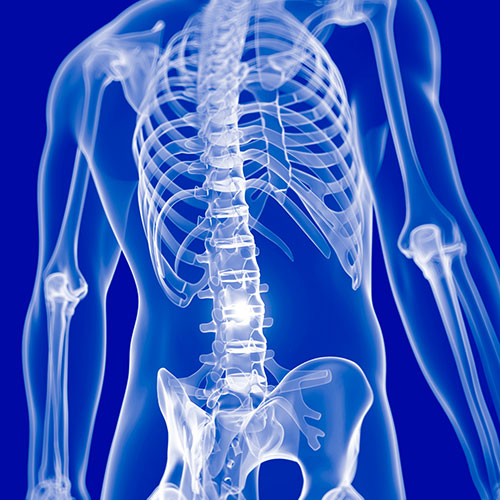Ankylosing Spondylitis Treatment
Ankylosing Spondylitis (AS) is a form of joint disease which leads to serious inflammation of spine along with sacroiliac (SI) joints. It mainly affects axial skeletal system, such as the ligaments and joints, knees and lower back. It can also affect various other joints and internal organs of the body including the eyes, respiratory system, renal system, shoulder blades, knee joints, hips, cardiovascular system and legs. In simple terms, it causes a person’s spine to stiffen because of inflammation in the important joints. It can possibly result in a kyphotic deformity in the spine, a frontward curve of the spine.
A normal spine has the ability to move around in many directions making able to bend over, turn, and twist. The vertebral bones are bound by suspensors ligaments and are split up through cushiony discs that allow movements of joints and overall body. Movements become hard or even impossible in advanced Ankylosing Spondylitis as ligaments calcify as well as vertebral bones blend with each other.

Causes Ankylosing Spondylitis
The cause of Ankylosing Spondylitis is unfamiliar up till now, although a lot is known about how it advances and the reason why this causes stiffness of spine. In the beginning, an inflammatory reaction in the bone fragments develops across the edges of important joints. Inflammatory cells generate chemicals which harm the particular bone. This leads the bone to start dissolving and making it weak round the side of each and every joint.
Destruction of the bone starts a procedure in which the body attempts to restore the injury with scar tissue formation making the bone less strong and sluggish. Once the inflammation starts to vanish, body tries to recover the bone fragments through creating calcium build up throughout the part of the injury. This calcium build up distribute towards the suspensory ligaments and discs between spinal vertebrae leading to a blend in the spine known as bony ankylosis.
Ankylosing Spondylitis is thrice more widespread of men compared to women. It is most commonly encountered in White males between Seventeen and Thirty-five. It seems to be hereditary, a particular gene HLA-B27 is contained in 80 to 90 % of affected individuals.
Signs and Symptoms Ankylosing Spondylitis
- The very first symptom of Ankylosing Spondylitis is sacroiliitis (swelling within the SI joints). This causes pain in the lower back and butt regions.
- There is usually extreme low back pain with hip and upper leg discomfort on a single or each side of thighs.
- Rigidity and low back pain exist in the early morning and reduce along with exercise during the day.
- Long bed rest may worsen the signs and symptoms, that is completely different from other kinds of lower back pain which are reduced with rest.
- Overall pine flexibility is reduced, which may have an impact on capability to bend over backward and forward. While in the back, it can impact the joints where rib cage connect with the spinal vertebrae. It can cause neck rigidity and ache and restricted movement.
- As the disease advances Inhaling and exhaling could be influenced. It could make the back rounded onward, known as kyphosis. When this happens, it may shrink the lung area making the breathing difficult.
- 25 % of affected individuals develop iritis, a disorder that is a result of inflammation in the iris, the colored section of a person’s eyes across the pupil. There might be pain and redness in the eye, however eyesight isn’t affected.
- The calcification in the ligaments and discs in between each vertebra results in blending of spinal vertebrae making spinal column less capable of flexibility and movement, leaving behind the vertebrae fragile and at risk of bone injuries. Once the spine will become totally merged, the pain sensation within the spinal region goes away but immovability and weakening of bones increases. If pain suddenly comes back after a long time of pain free, you might have a cracked vertebra.
KKT diagnosis
Canadian certified orthopedic surgeons at KKT will need a complete history, execute a detail physical evaluation and carry out 3D KKT Xrays. Canadian certified KKT orthopedic surgeons may possibly recommend X-rays of your spine and pelvis. The vertebral column of an affected individual gives a particular appearance on X rays labeled as bamboo spine. A blood examination is carried out to find out whether or not there is a HLA-B27 gene.
If you possess the signs and symptoms of disease and also the HLA-B27 gene, Ankylosing Spondylitis is probably be the appropriate medical diagnosis. A blood examination also shows inflammation within the body. The exam used just for this is the Erythrocyte Sedimentation Rate (ESR). The urinalysis may be carried to check renal system complications of the disease.
KKT Treatment
It is usually managed by medications to decrease pain and inflammation. But these pain killer and anti inflammatory medications are found to cause numerous side effects and these unwanted side effects might be severe if these medicines are adopted for extended period of time. Surgical treatment is unusual in this case.
KKT treatment is found to be quite successful in managing the complications caused by Ankylosing Spondylitis and impedes the process of disease progression. KKT treatment is a gentle and effective approach to relieve pain and discomfort caused by without any side effects. KKT treatment enhances spinal column range of motion by realigning it into normal symmetrical position and helps with soreness management and protection against deformities caused by the disease. A well-rounded KKT treatment plan aids in soothing inflammation and pain, enhancing your ability to move, durability and flexibility, and assisting you to perform your everyday routines more easily and skillfully.
If you feel you are suffering from Ankylosing Spondilitis book your appointment today to avail the best non-invasive solution.

© 2019 KKT Orthopedic All Rights Reserved.
